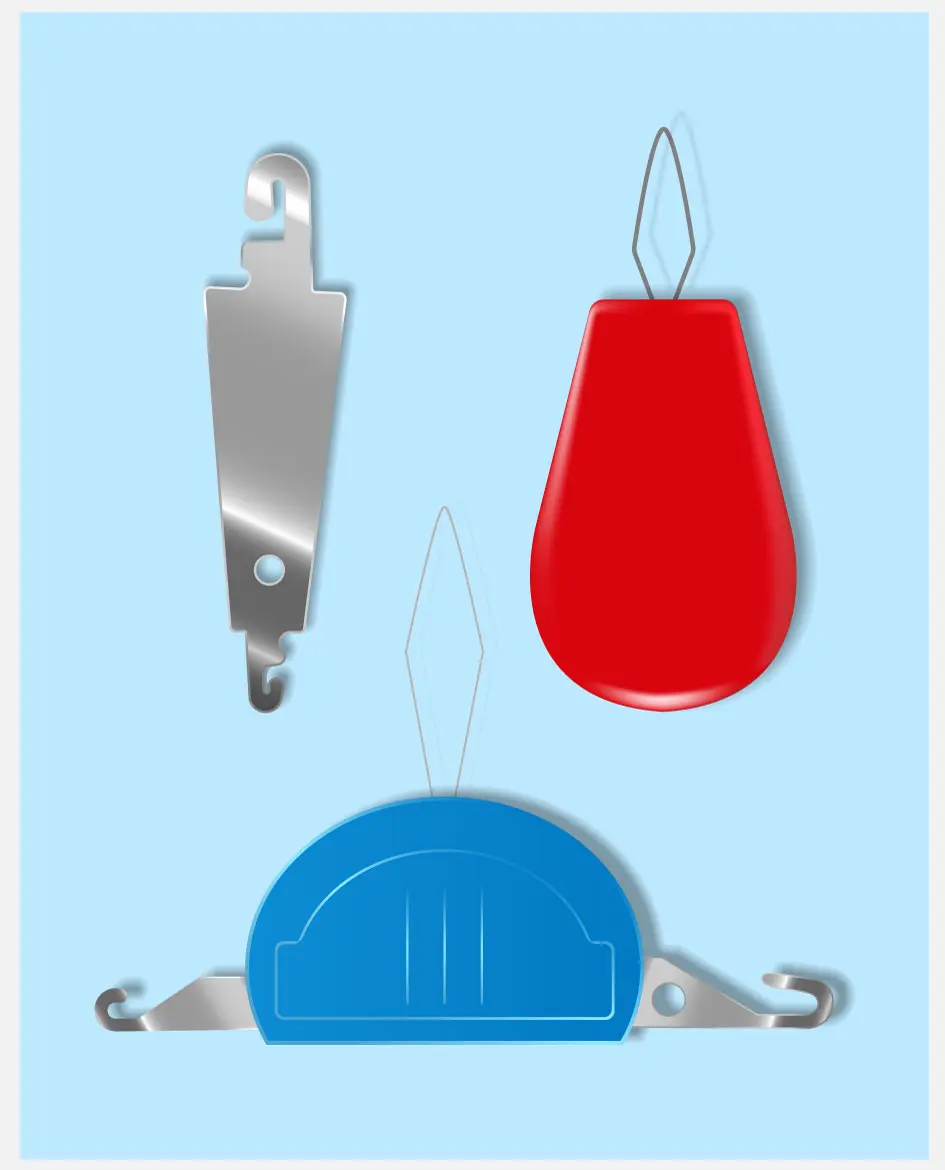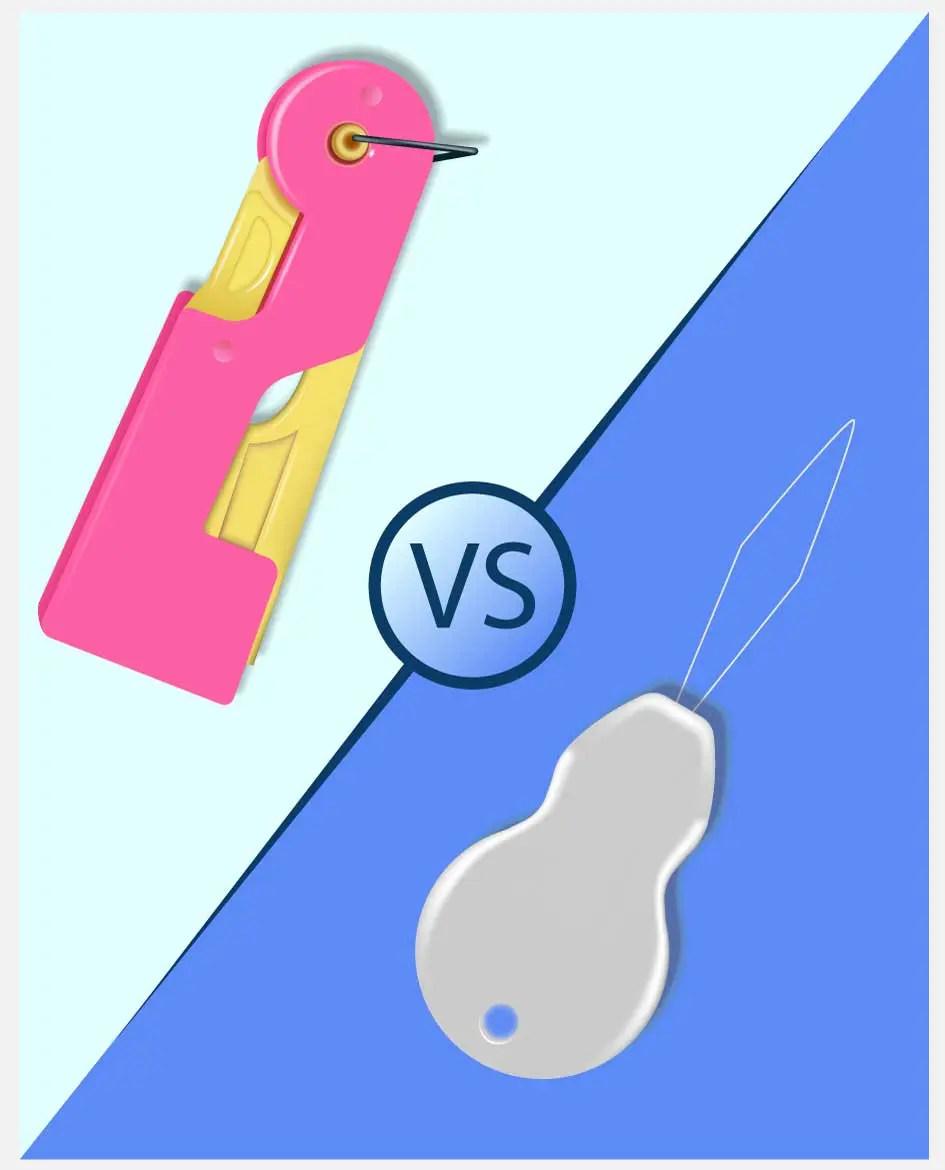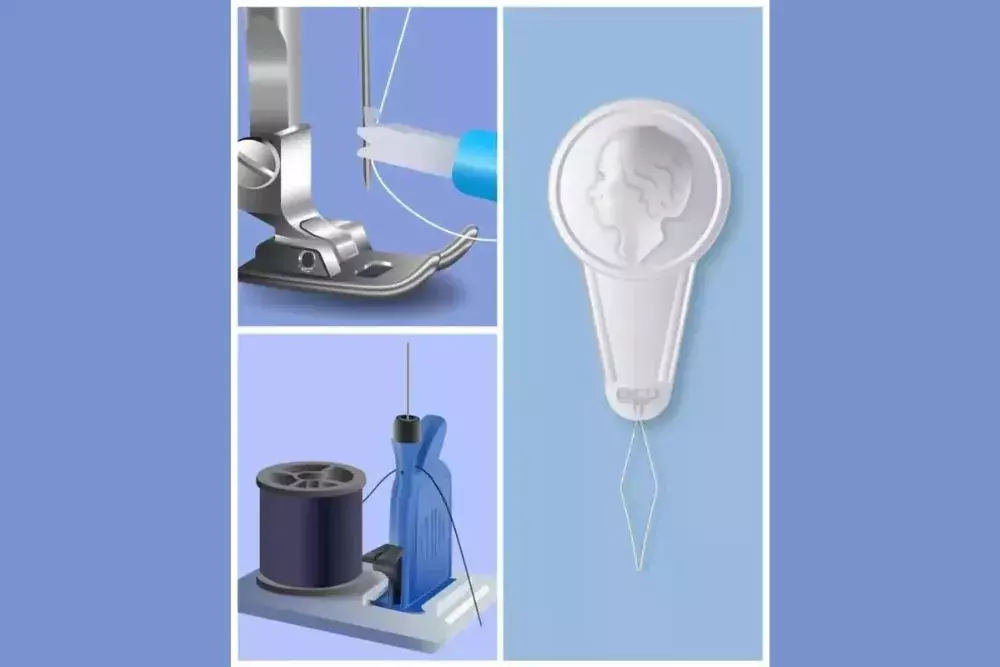The Proper Use of Needle Threaders Pros and Cons
2023-04-13
Needle threaders can be extremely helpful when it comes to sewing tasks. If you have ever encountered the difficulty of threading a needle and have spent a considerable amount of time doing so, then you are likely aware of the convenience that a needle threader can provide.
Threading needles can be daunting for anyone, particularly beginners. For those who don’t have a steady hand, it can be challenging to insert the thread through the eye of the needle. For others, getting older brings new challenges, like poor eyesight and dexterity, and without a needle threader, they wouldn’t be able to continue sewing.
Some people have sewed for years and have never used a needle threader. They might know what that doo-hickey in their sewing toolkit is meant for, but they need to learn how to use it.
While needle threaders are designed to help you quickly and easily thread your needle, they have advantages and disadvantages. If they aren’t used properly, they can make threading a needle even more frustrating.
Types of Needle Threaders

Needle threaders are available for both hand-sewing needles and machine-sewing needles. There are a few different types of needle threaders available for hand sewing. The most common type of needle threader has a thin wire loop in the shape of a diamond held together by a small plastic or tinplate coin-shaped handle.
People often use old-fashioned needle threaders to thread tiny needles with fine thread. Some people also use needle threaders for thick threads and yarns, which is why needle threaders come in two main sizes.
To use a plastic needle threader, insert the wire into the eye of the needle. Then, put the tail of the thread through the wire. Finally, pull the thread back out through the eye of the needle with the threader.
There are also automatic needle threaders available. You simply insert your needle into the device, lay the thread in the slot, and press the button. A small pin mechanism pushes the thread through the eye of the needle for you.
Types of Sewing Needle Threaders
There are several types of needle threaders available, including:
Handheld Needle Threaders: These are simple and affordable needle threaders. They are typically made of plastic and have a small wire loop that is used to thread the needle. To use a handheld needle threader, you insert the wire loop through the eye of the needle, place the thread in the loop, and pull it through the needle.
Automatic Needle Threaders: These threaders are built into sewing machines and are designed to thread the needle automatically. They work by inserting the thread into a small hook that is located above the needle. The thread is automatically pulled through the needle when the hook is pulled down.
Self-Threading Needles: These needles have a small slit on the side of the eye, allowing you to slide the thread into the needle without having to thread it through a small hole.
Threader Tools: These small tools can be used to thread a needle. They are usually made of metal and have a small wire loop on one end. To use them, you insert the wire loop through the eye of the needle, place the thread in the loop, and pull it through the needle.
Magnifying Needle Threaders: These threaders are designed for people with imperfect eyesight. They have a small magnifying glass attached to them, making it easier to see the eye of the needle and thread it.
Pros and Cons Of Using a Needle Threader
Needle threaders are a great tool to have in your sewing kit, but they can also be a source of frustration. Sometimes a needle threader will make your job easier, but using one doesn’t always make sense.
When Using a Needle Threader Makes Sense
These are some of the advantages of using a needle threader:
Using a needle threader can save you time and effort. It is much easier and faster than threading a needle without one.
Using a needle threader is easier for people with certain conditions, such as bad eyesight, shaky hands, arthritis, poor dexterity, and tremors.
Needle threaders are inexpensive and easy to find.
Working with different types of threads, like threads with a fine diameter, is much easier when using a needle threader.
Reasons Why You May Not Want to Use a Needle Threader
Sometimes, using a needle threader doesn’t make threading a needle easier. If you’ve ever used them in these circumstances, you might have decided that needle threaders are worthless. Actually, they just aren’t fit for these situations.
Needle threaders are challenging to use with small needles with tiny eye holes.
Using needle threaders with thick thread is challenging and may break the needle threader.
Needle threaders may break after extended periods of use, particularly if you are misusing them.
Unlike the automatic threaders on some sewing machines, needle threaders can be time-consuming.
Learning how to use a needle threader requires patience, and it is a skill that is learned over time. Don’t expect to be excellent at using a needle threader right away. Give it time.
Even though needle threaders are inexpensive, the added expense and the trouble of learning to use one might not make sense to you.
For people with certain conditions, or those working with fine threads, needle threaders are invaluable. However, they may not be the best option for everyone.
Threading Needles By Hand Versus A Built-in Needle Threader

Sewing machines have been continually improved since the first practical sewing machine became available in 1846. Today, sewing is easier, faster, and more precise than ever, and many of the most challenging and frustrating sewing tasks have been automated by sewing machine engineers.
Many beginning sewists can benefit from starting with a sewing machine that uses an automatic needle threader, and there are several excellent models from which to choose. While some experienced sewers might like to thread the needle themselves, having an automatic threader can save time, especially for people whose eyesight has started to decline.
When you’re sewing, you have to thread your needle quite often. You have to thread your needle when you start a new project, when your thread breaks, when you run out of thread, and when you want to change colors. If you’re struggling with threading your needle, it can inhibit your entire sewing process and make it much less enjoyable.
Many newer models of sewing machines have automatic threaders. Check your sewing machine manual to see if your model has one. On most models with an automatic threader, there will be a small lever, usually located to the upper left of the needle. Follow these instructions to have a successful needle threading experience.
Steps To Have a Successful Needle Threading Experience
First, your needle must be inserted into your machine correctly. Many models won’t let you proceed if your needle is improperly inserted. Always ensure the needle is positioned perfectly to avoid damaging your needle or machine, and make threading easy and successful.
Once you have confirmed that your needle is inserted correctly, continue with these steps:
Lower The Presser Foot
Set the presser foot to the downward position. Lowering the presser foot will create more space for using the needle threader. The tension disks will automatically activate to keep the thread from slipping when the presser foot is lowered.
Hold the Thread To the Left Of the Needle
Take the thread and place it to the left of the needle. Then, wrap it around the left prong of the needle threader and press or pull it straight down, not at an angle.
Rotate Needle Threader Head
Position the needle threader head so that it wraps around the back of the eye of the needle. When you firmly press the lever, this process will happen automatically on many machines.
Cross The Thread
Gently hold the thread in your right hand with slight tension and angle it up to the "2 o'clock" position while keeping it parallel to your body. Then, cross the thread from left to right and hook it into the needle threader. Make sure not to push it toward the back of the sewing machine.
Release
Using a light touch, keep the thread between your fingers. Then release the lever with your left hand to turn the needle thread assembly away from the needle’s eye. Don't grip the thread too tightly, as this will make it difficult for the needle threader's hook to draw the thread through the eye of the needle. Use a light touch on the thread that allows the needle threader to take it out of your grasp.
Pull Loop
Using your fingers or tweezers, pull the loop of thread from the rear of the needle to complete the threading process.
When you first use an automatic threader, it takes some practice to get used to it. After using this procedure several times, it will become easier and more fluid for you. Until you’re comfortable, follow these steps one at a time to ensure you’re getting it right.
If you’ve been sewing for years, or even decades, threading a needle by hand will seem like second nature. It will take a little time, but threading a needle with the automatic threader will soon be just as natural as threading by hand.
Mistakes to Avoid
You can damage your automatic threader if you aren’t careful. Here are a few things to remember when threading your sewing machine with an automatic threader.
Read the instructions in your sewing machine manual before starting.
To avoid damaging your machine or sewing needles, ensure your needle is inserted correctly before using the automatic threader.
Make sure to lower your needle threader into the proper position. The hook has to pass through the eye of the needle, or it won’t be able to pull the thread through.
Hold the thread gently when using the threader, and allow it to be pulled by the mechanism. If you hold on too tightly, you can easily cause the thread to break.
Use the correct type of thread for your machine, fabric, and needle.
Secure the thread after threading to ensure it doesn’t slip back out.
Check for knots and tangles in your thread. They can damage or bend your threader.
Keep your threader and sewing machine clean. Dust and lint can collect, which can cause the components of your machine to work improperly. Small amounts of thread can even prevent the hook from passing through the eye of the needle.
Always pay attention to the tension of your thread. Whether threading your machine or making a seam, you should be aware of the tension. Changes in the tension can signal other problems.
Tips and Tricks for Threading Needles
Here are a few tips and tricks for using a sewing machine needle threader.
Try removing the presser foot the first time you use the automatic threader. It will give you more space to work and allow you to see what you are doing clearly.
If you take a closer look, you'll be able to see how the automatic threader on your sewing machine works. By understanding the mechanism behind automatic needle threaders, which use a crochet-hook-like structure to catch the thread and pass it through the eye of the needle, the process of using them becomes much more straightforward.
Ensure the thread goes through the needle from front to back.
You could have difficulties when pairing certain needles and threads. Always make sure that your needle, fabric, and thread combinations match.
Needle threaders are fragile components, and they can get bent easily. Sometimes, you can gently bend them back into place with a screwdriver. If you aren’t comfortable doing this yourself, take your machine to a repair shop, and they can quickly fix it.
If you’re using a hand-sewing needle threader, you can apply a small drop of oil to the wire so that it will insert easily into the eye of the needle. Match the size of your needle threader with the thread and needle. Otherwise, the threader can get stuck in the eye of the needle.
Needle Threading Makes A World Of Difference
Learning how to use a needle threader takes some time and patience, but once you become comfortable using one, it can simplify your sewing process and make it more enjoyable. Using needle threaders is especially helpful when sewing with fragile threads or working with tiny needles. If you’re experiencing problems with sight and dexterity, a needle threader can make sewing easier.
Sometimes, deciding to change how you do something is harder than actually changing. It might seem awkward at first, but once you get familiar with using a needle threader, whether for hand sewing or machine sewing, you’ll never want to go back to threading by hand.





